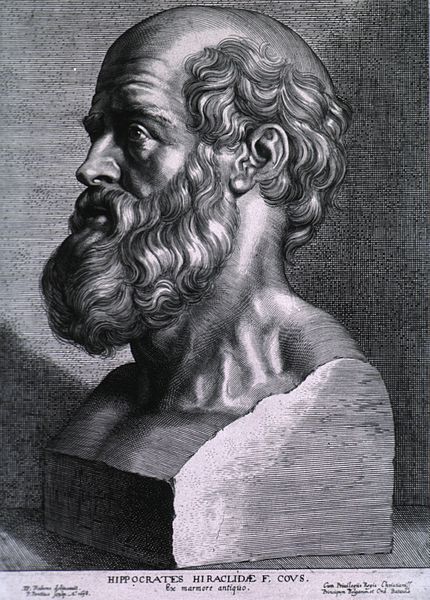 Conjurers, Purifiers, Vagabonds And Quacks? The Clinical Roles of the Folk and Hippocratic Healers of Classical Greece
Conjurers, Purifiers, Vagabonds And Quacks? The Clinical Roles of the Folk and Hippocratic Healers of Classical Greece
By Leanne McNamara
Iris: Journal of the Classical Association of Victoria, Vol. 16-17 (2003-4)
Introduction: Hippocratic medicine is widely acknowledged as one of the most important and influential of the intellectual developments originating from classical period Greece, and with just cause. Yet Hippocratic iatroi were practising alongside a great variety of folk healers from purifiers to diviner-healers, some of whom they characterised as quacks. This paper investigates the clinical roles these folk healers played in an attempt to challenge this depiction by their Hippocratic rivals.
For heuristic convenience, the multitude of folk practitioners can be subdivided on the basis of their principal methods of healing. There were folk healers who principally used pharmaka (materia medica such as herbs) to heal their patients, including the rhizotomoi (rootcutters) and pharmakopolai (drugsellers) as well as the pharmakeis/pharmakides (male and female witches). Other practitioners relied principally on the healing power of the hand, including the various purifiers (kathartai, perikathartai, hagneutriai, hagnitai, hagnistai and phoibetriai) and the maiai (midwives) and other obstetric practitioners. The goai (sorcerers) focused on the healing word, primarily using oral and inscribed incantations. Finally the manteis and iatromanteis (diviners and diviner-healers) employed divination as their principal healing method. This taxonomy is not to suggest that the distinctions between the different healers were clear-cut. On the contrary, there was undoubtedly a great deal of overlap between the different groups of folk healers and also to some extent between the folk and Hippocratic sectors. Nevertheless, the categorisation provides a framework within which to investigate how the myriad of folk and Hippocratic healers contributed to the overall medical system, in which health care could be sought and provided, and in which health and illness were defined.

With so many healers operating within the one medical system, how did an individual who fell sick determine which healer(s) he/she should visit or summon to the bedside? Anthropological studies of cultures with pluralistic medical systems indicate that the choice of healer is an extremely complex behaviour. Patients who decide to seek medical care may consult one practitioner, a number of different types of healers simultaneously, or a succession of practitioners. Some individuals habitually consult the same practitioner, practitioner-type, or group of practitioners each time they become ill, while others alter their health care seeking behaviour with each illness episode. One factor influencing the choice is the perceived differences in the type of services offered by various groups of practitioners. This paper contends that while folk and Hippocratic practitioners fulfilled the same general healing roles, there were important differences in the specific details of how these roles were performed. I will argue that the specific differences in the healers’ clinical functions, including which aspects of the clinical roles were emphasised and which nosoi (maladies) were dealt with, played an important role in influencing which healer(s) an individual and his/her family might choose to consult when illness struck
Sponsored Content
By Leanne McNamara
Iris: Journal of the Classical Association of Victoria, Vol. 16-17 (2003-4)
Introduction: Hippocratic medicine is widely acknowledged as one of the most important and influential of the intellectual developments originating from classical period Greece, and with just cause. Yet Hippocratic iatroi were practising alongside a great variety of folk healers from purifiers to diviner-healers, some of whom they characterised as quacks. This paper investigates the clinical roles these folk healers played in an attempt to challenge this depiction by their Hippocratic rivals.
For heuristic convenience, the multitude of folk practitioners can be subdivided on the basis of their principal methods of healing. There were folk healers who principally used pharmaka (materia medica such as herbs) to heal their patients, including the rhizotomoi (rootcutters) and pharmakopolai (drugsellers) as well as the pharmakeis/pharmakides (male and female witches). Other practitioners relied principally on the healing power of the hand, including the various purifiers (kathartai, perikathartai, hagneutriai, hagnitai, hagnistai and phoibetriai) and the maiai (midwives) and other obstetric practitioners. The goai (sorcerers) focused on the healing word, primarily using oral and inscribed incantations. Finally the manteis and iatromanteis (diviners and diviner-healers) employed divination as their principal healing method. This taxonomy is not to suggest that the distinctions between the different healers were clear-cut. On the contrary, there was undoubtedly a great deal of overlap between the different groups of folk healers and also to some extent between the folk and Hippocratic sectors. Nevertheless, the categorisation provides a framework within which to investigate how the myriad of folk and Hippocratic healers contributed to the overall medical system, in which health care could be sought and provided, and in which health and illness were defined.
With so many healers operating within the one medical system, how did an individual who fell sick determine which healer(s) he/she should visit or summon to the bedside? Anthropological studies of cultures with pluralistic medical systems indicate that the choice of healer is an extremely complex behaviour. Patients who decide to seek medical care may consult one practitioner, a number of different types of healers simultaneously, or a succession of practitioners. Some individuals habitually consult the same practitioner, practitioner-type, or group of practitioners each time they become ill, while others alter their health care seeking behaviour with each illness episode. One factor influencing the choice is the perceived differences in the type of services offered by various groups of practitioners. This paper contends that while folk and Hippocratic practitioners fulfilled the same general healing roles, there were important differences in the specific details of how these roles were performed. I will argue that the specific differences in the healers’ clinical functions, including which aspects of the clinical roles were emphasised and which nosoi (maladies) were dealt with, played an important role in influencing which healer(s) an individual and his/her family might choose to consult when illness struck
Click here to read this article from Iris
Sponsored Content